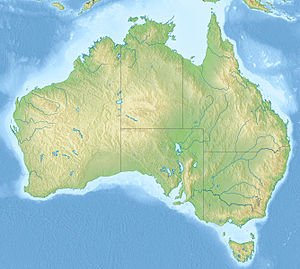Mount Kosciusko
| Mount Kosciuszko | |
|---|---|
| Jagungal, Jar-gan-gil, Tar-gan-gil, Tackingal | |

Mount Kosciuszko summit.
|
|
| Highest point | |
| Elevation | 2,228 m (7,310 ft) |
| Prominence | 2,228 m (7,310 ft) |
| Isolation | 1,894.26 km (1,177.04 mi) |
| Listing | |
| Coordinates | 36°27′27″S 148°15′44″E / 36.45750°S 148.26222°ECoordinates: 36°27′27″S 148°15′44″E / 36.45750°S 148.26222°E |
| Geography | |
|
|
|
| Parent range | Main Range, Great Dividing Range |
| Topo map | Perisher Valley |
| Climbing | |
| First ascent |
1840 by Paweł Edmund Strzelecki (European) Ancient Times by Indigenous Australians |
| Easiest route | Walk (dirt road) |
1840 by Paweł Edmund Strzelecki (European)
Mount Kosciuszko is a mountain located on the Main Range of the Snowy Mountains in Kosciuszko National Park, part of the Australian Alps National Parks and Reserves, in New South Wales, Australia and is located west of Crackenback and close to Jindabyne.
With a height of 2,228 metres (7,310 ft) above sea level, it is the highest mountain in Australia. Various measurements of the peak originally called Kosciuszko showed it to be slightly lower than its neighbour, Mount Townsend. The names of the mountains were swapped by the New South Wales Lands Department in 1892 so that Mount Kosciuszko remains the name of the highest peak of Australia, and Mount Townsend ranks as second. The 1863 picture by Eugene von Guerard hanging in the National Gallery of Australia titled "Northeast view from the northern top of Mount Kosciusko" is actually from Mount Townsend.
It was named by the Polish explorer Pawel Edmund Strzelecki in 1840, in honour of the Polish-Lithuanian national hero, General Tadeusz Kościuszko, because of its perceived resemblance to the Kościuszko Mound in Kraków.
The name of the mountain was previously spelt "Mount Kosciusko", an Anglicisation, but the spelling "Mount Kosciuszko" was officially adopted in 1997 by the Geographical Names Board of New South Wales. The traditional English pronunciation of Kosciuszko is /kɒziːˈʌskoʊ/, but the pronunciation /kɒˈʃʊʃkoʊ/ is now sometimes used, which is substantially closer to the Polish pronunciation [kɔɕˈt͡ɕuʂkɔ].
...
Wikipedia


